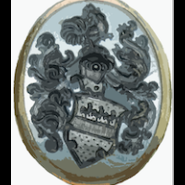Printing Digital Photos
-
Recently Browsing 0 members
- No registered users viewing this page.
Announcements
-
Topics
-
-
Popular Contributors
-
-
Latest posts...
-
0
Fire Fire Destroys Chiang Mai Temple Hall, Roof Collapses
Pictures courtesy of Amarin. A blaze engulfed the viharn (main hall) of Wat Veluwan (Pa Phai) in Mae Rim district, Chiang Mai, in the early hours of the morning of 18 August, causing the roof and much of the wooden structure to collapse. The fire broke out just after midnight at the temple in Muang Kaew subdistrict, sending flames shooting into the night sky and alarming nearby residents as the blaze spread rapidly through the hall. Fire crews from surrounding municipalities, joined by rescue teams from several volunteer foundations including Ruamkatanyu Chiang Mai, Khun Phon Ruang Khao Sai Nuea and the Kusol Songkroh Association, rushed to the scene. Multiple fire engines battled the blaze for more than an hour and half, before finally bringing it under control. Despite their efforts, the viharn sustained extensive damage. The wooden framework and roof were almost entirely destroyed, leaving the interior littered with charred debris, ash and smouldering remains. Officials cordoned off the site to prevent injuries as the structure remains unstable. The cause of the fire has not yet been determined. Forensic police are expected to examine the site later, to collect evidence and establish the origin of the blaze. Adapted by Asean Now from Amarin 2025-08-18 -
60
UK Migrant Arrested for Allegedly Entering Blind Woman's Flat
No. Only the truth. Accept it -
339
Blast from the Past - 60's, 70's, 80's,90's Music (2025)
Bob Dylan - Don't Think Twice, It's All Right (Live 1965) -
0
Myanmar Police Seize Heroin and Nearly One Million Pills
Myanmar authorities have intercepted a major drug shipment in Sagaing region, confiscating over 15 kilograms of heroin and nearly one million stimulant tablets in a targeted operation earlier this month. Acting on a tip-off, anti-narcotics police stopped a motorcycle in Kalay township on 6 August. The search revealed 15.07 kg of heroin and 992,000 stimulant tablets, with an estimated street value of 2.7 billion kyats—roughly $1.28 million USD. The Central Committee for Drug Abuse Control (CCDAC) confirmed the seizure on Saturday, describing it as a significant blow to regional trafficking networks. The suspects involved have been formally charged under Myanmar’s narcotics laws, and further investigations are underway. Sagaing region has become a focal point in Myanmar’s ongoing battle against drug trafficking, with recent months seeing a surge in large-scale busts. The porous borders and remote terrain make it a favoured route for smugglers moving narcotics across the country. This latest haul underscores the scale of the challenge facing law enforcement, as synthetic drugs and heroin continue to flood Southeast Asia’s black market. Authorities have pledged to intensify surveillance and crack down on trafficking routes, particularly in border zones. While the suspects remain unnamed, officials say the operation was part of a broader strategy to disrupt organised crime and reduce the flow of illicit substances into urban centres. Myanmar remains one of the region’s largest producers of opiates, and international observers have long called for stronger cross-border cooperation to stem the tide. For now, the Sagaing bust stands as a reminder of the country’s complex and ongoing struggle with narcotics. -2025-08-18 -
5
Lazada returns again!
It has all become pure annoyance, last week I was able to return another product to Lazada that did not match the description, refused on 2 occasions, eventually paid back down that stupid wallet. Placed another order yesterday thinking of using the wallet for that. But that just doesn't work, first a copy of your passport, then face recognition via your mobile, and then you think, it's done...forget it, another 24-hour wait for verification. Terrible annoyance. -
6
Crime Myanmar Woman Arrested for Running Illegal Language School
bad language meaning: swear words Hope this helps.
-
-
Popular in The Pub








Recommended Posts
Create an account or sign in to comment
You need to be a member in order to leave a comment
Create an account
Sign up for a new account in our community. It's easy!
Register a new accountSign in
Already have an account? Sign in here.
Sign In Now